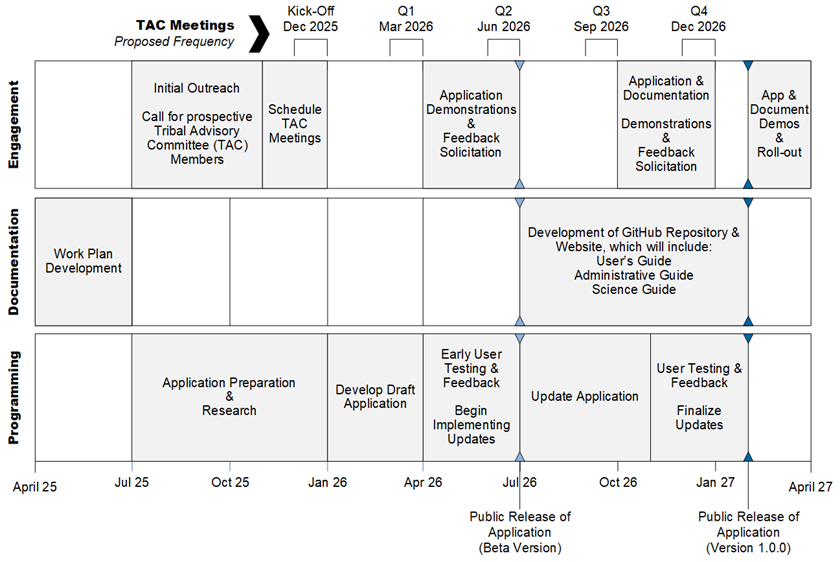
Bioaccumulation Monitoring Program Tribally-centered Fish Consumption Application
Background | Tribal Engagement | Development Timeline | Products
Background
The State of California's Bioaccumulation Monitoring Program (Program) was established in 2006 with a mission to conduct comprehensive, statewide monitoring to assess whether fish and shellfish found in California's streams, lakes, and coastal areas are safe to eat. The Program is implemented by the State Water Resources Control Board's Surface Water Ambient Monitoring Program (SWAMP).
The Program, in partnership with the San Francisco Estuary Institute (SFEI) and the Office of Environmental Health Hazard Assessment (OEHHA), is in the early phases of developing an interactive and user-friendly application that includes and contextualizes bioaccumulation monitoring data, thresholds, advisories, and guidance associated with fish consumption and human health. The application will be tailored to the needs of California Tribal users who consume fish for subsistence and/or cultural purposes.
Tribal Engagement
The partnership between the Program and California Native American Tribes (Tribes) and Tribal Organizations to inform the development of the application will be critical to ensure the application and its features are tailored to broad and diverse Tribal audiences.
Tribal Advisory Committee (TAC)
The purpose of this Tribal Advisory Committee (TAC) is to help inform and/or co-create application materials to ensure they are relevant to Tribal and subsistence consumers of fish and shellfish in California. TAC members will be asked to provide guidance related to application development decisions, features, and functionality as well as supporting the early review of the application when it is available.
The goal is to assemble the TAC and begin meeting by December 2025. The frequency and format of TAC meetings will depend on TAC members' interest and availability.
Tribally-led Meetings
We welcome feedback from California Tribal Governments or Tribal Organizations who are not able to join the TAC. Program staff will be available to attend and/or present about the Application development and review efforts, and receive feedback at broader Tribally-led meetings, upon request.
If you are interested in joining the TAC or would like to engage in this process in a different way, please contact: anna.holder@waterboards.ca.gov (preferred) or 916-341-5096.
Development Timeline

Subscribe directly to the Safe to Eat Workgroup Email List
Subscribe to our Workgroup email list to receive notifications and the latest updates. After subscribing, you will need to check your email host for a confirmation email to complete the subscription.
Contact Information
For questions about the Bioaccumulation Monitoring Program Tribally-centered Fish Consumption Application, please contact: anna.holder@waterboards.ca.gov (preferred) or 916-341-5096


